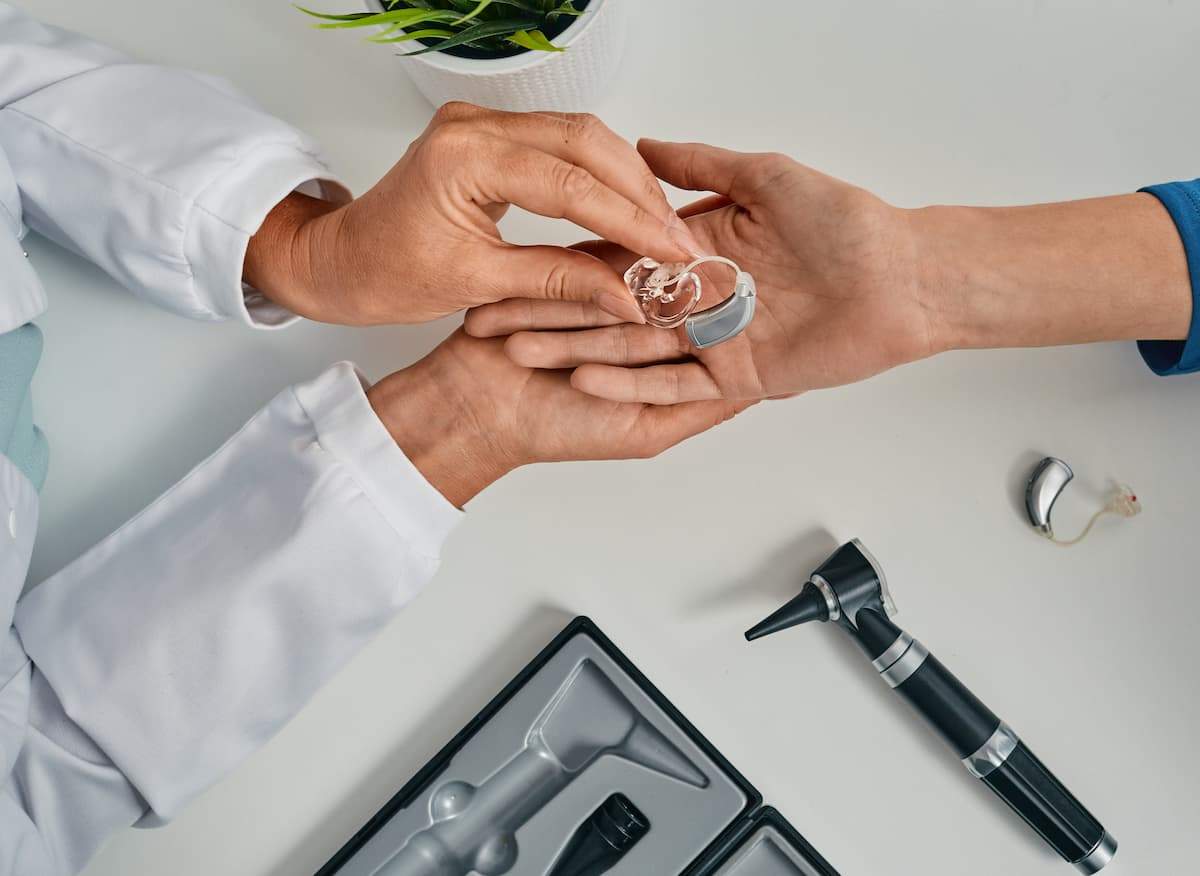片側難聴は片方の耳の聴力のみに影響を及ぼし、奥行き知覚、音源定位、そして全体的な聴力の明瞭度に影響を及ぼします。このブログでは、片側難聴について、その定義や症状から原因、治療法などまで、幅広く解説します。
🚀 この投稿をナビゲート
以下もご興味があるかもしれません:
パート 1: 片側難聴とは何ですか?
片側難聴は、片方の耳の聴力が低下し、もう片方の耳は正常に機能している場合に起こります。これは、両耳に影響を及ぼす両耳難聴とは異なります。片側難聴の場合、脳は音の位置を特定したり、会話と背景雑音を区別したり、バランスを保ったりするために両耳からの入力に依存するため、日常生活に支障をきたすことがあります。
場合によっては、片側難聴に耳鳴り(影響を受けた耳で常に鳴ったりブーンという音がする)が伴います。
パート2:片側難聴の症状
片側難聴は、コミュニケーションや聴覚処理に重大な影響を及ぼす可能性があります。一般的な症状には以下のようなものがあります。

- 音源の位置を特定するのが困難:片方の耳しか機能していないと、音がどこから発生しているかを判断するのが困難です。
- 騒がしい環境での課題:特に混雑した場所や社交の場では、背景のノイズを除去するのが難しくなります。
- 音量を上げる必要性:片側難聴の人は、障害のある側の音をよりよく理解するために、電話やその他の機器の音量を上げる必要がある場合があります。
- 耳鳴りの可能性:多くの人が、障害のある耳で持続的に鳴ったりブーンという音を感じます。これは片側性耳鳴りと呼ばれ、コミュニケーションの困難さを増すことがあります。
パート3:片側難聴と両側難聴
片側難聴と両側難聴の違いは次のとおりです。
- 片側難聴:片方の耳だけに影響するため、音源定位やノイズフィルタリングが困難になることがあります。多くの場合、外傷や感染症など、片方の耳だけに影響を与える特定の原因によって引き起こされます。
- 両耳難聴:両耳に発症し、加齢、長期間の騒音への曝露、または遺伝的要因によって引き起こされることが多い。両耳難聴の人は、あらゆる音において明瞭度と音量が低下することがある。
パート4:片側難聴の原因
片側難聴の原因は、突発的なものから慢性的なものまで多岐にわたります。一般的な原因は以下のとおりです。
- 突発性感音難聴(SSNHL) :片耳に突然発症するこの難聴は、ウイルス感染、血流障害、または自己免疫反応が原因であることが多いです。コルチコステロイドによる早期治療で損傷を回復できる場合もあるため、迅速な医師の診察が不可欠です。
- 聴神経腫:聴神経に生じる良性の腫瘍で、めまいや平衡感覚障害などの症状とともに、徐々に片側の難聴を引き起こします。
- メニエール病: この内耳の障害は、めまい、耳鳴り、変動する難聴を伴い、通常は片方の耳に影響を及ぼします。
- 耳の感染症と外傷: 繰り返しの耳の感染症、重度の頭部外傷、または突然の圧力変化により、内耳の構造が損傷し、片側の聴覚障害を引き起こす可能性があります。
これらの原因を理解することで、早期介入と適切な治療が可能になります。
パート5:片側難聴と耳鳴り
片側難聴は、多くの場合、片側耳鳴り(片耳で常にキーンと鳴ったり、ブーンという音がする)を伴うことがあります。難聴を伴わずに片側耳鳴りを経験する人もいますが、多くの場合、他の聴覚障害に関連しています。
耳鳴りと難聴について詳しくは、以下の詳細なガイドをご覧ください。 耳鳴りと難聴。
パート 6: 片側難聴は障害ですか?

パート7:片側難聴の治療法
片側難聴の治療法は、根本的な原因と重症度によって異なります。一般的な治療法は以下のとおりです。
- 補聴器: ワイヤレスBluetooth補聴器などの特殊な補聴器は、障害のある耳の音を増幅し、明瞭度と音のバランスを改善します。最新モデルには、Bluetooth接続やノイズキャンセリングなどの機能が搭載されています。
- 薬物療法:コルチコステロイドは突発性難聴の炎症を軽減するのに役立ち、場合によっては部分的または完全な回復をもたらします。
- 手術:腫瘍や耳の異常などの構造上の問題の場合、障害物を取り除いたり聴神経への圧力を軽減したりするために手術が必要になることがあります。
- 音響療法:耳鳴りのある人にとって、音響療法または耳鳴り再訓練療法 (TRT) は症状の緩和に役立ちます。

Diamond X1 - Bluetooth搭載の最高の補聴器
新人価格
249.99ドル 309.99ドル
- ✔ クリアな聴覚を実現するアダプティブサウンド モード。
- ✔ 通話とストリーミング用の Bluetooth。
- ✔ アプリ制御のカスタマイズ可能な調整。
- ✔ 充電可能で急速充電。
- ✔ 軽度から中程度の難聴に最適です。
パート8:聴覚の健康維持
片側難聴を防ぐには、聴力を守ることが不可欠です。以下にヒントをいくつかご紹介します。
- 大きな音への暴露を制限する:大きな音に頻繁にさらされると、聴覚障害のリスクが高まります。
- 定期検診:聴力検査は難聴の初期兆候を発見するのに役立ちます。
- 補聴器の適切なお手入れ:補聴器を効果的に機能させるために、定期的に清掃してください。メンテナンスのヒントについては、 補聴器の清掃に関するガイドをご覧ください。
パート9:適切な補聴器の選び方
片側難聴の方にとって、高品質な補聴器を選ぶことは大きな違いをもたらします。Cearvolは、Bluetoothとノイズフィルタリング機能を備えた、現代のアクティブなライフスタイルに最適な高度な補聴器を提供しています。ニーズに合ったモデルを見つけるには、 Cearvolのページをご覧ください。




コメントを書く
全てのコメントは、掲載前にモデレートされます
このサイトはhCaptchaによって保護されており、hCaptchaプライバシーポリシーおよび利用規約が適用されます。